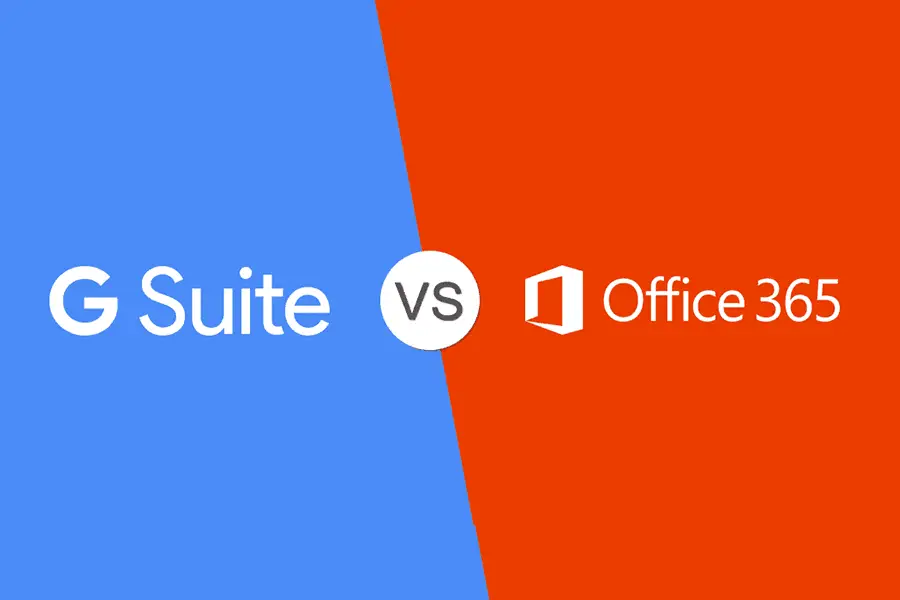Today, in order for your office to function well, you cannot do without a business suit that unifies all digital operational processes. Whether you need it to send an email, write an article, share a spreadsheet, or work on a presentation with your team, it all requires you to have a productivity suite. So when the time comes, you’re presented with two (at first glance the same) options to choose from: Google Workspace (formerly known as G Suite) and Microsoft 365 (formerly known as Office 365).
If you’ve never owned a business productivity suite before and it’s time to choose one, you probably have a lot of questions running through your head: what’s the ultimate difference? Which option will save me the most money? Which one will provide me with more features? And what are the other indicators that I should look at to make the right decision?
Or maybe you are considering switching from one platform to another and need more data to make the right decision. If you’re thinking about moving data from Google Workspace to Microsoft 365, check out the G Suite to O365 migration step-by-step article. Whatever the case, we are going to provide you with a comparison of these two options.
When you look at these two suits, they look quite similar. But make no mistake, there are some crucial differences that set them apart. The differences in price and features are dictated by the fact that these two suits are initially designed for different environments. While Microsoft 365 has always been primarily focused on downloadable on-premises solutions, Google Workspace is aimed at the cloud and is completely web-based. Many of their differences derive from this fact.
But let’s talk details.
Price and Plans
The price of both suits depends on the subscription level and the features that come with these levels. The subscription level (and the price you’ll pay accordingly) always depends on your particular business needs and goals.
For Microsoft 365, you commit to one year for each plan you buy; for Google Workplace, you can choose a monthly subscription, like all SaaS-based models. This is something to keep in mind if you plan to switch from Microsoft 365 to G Suite. (For more information on migrating data from Microsoft 365 to Google Workspace, see this article https://spinbackup.com/blog/migrating-from-office-365-to-g-suite/)
Google Workspace:
Basic ($6 USD/user/month). This plan provides its users with 30 GB of cloud storage per user, video calls for 100 participants, standard support, and access to administration and security control.
Business Standard ($12 USD/user/month). Here, the number of video conferences by participants rises to more than 150 recordings, and each user gets 2TB of storage, standard support, and access to admin and security control.
Business Plus ($18 USD/user/month). Here, you get more updates such as the ability to set retention policies in Google Vault (eDiscovery), the number of participants in video meetings increases to 250 + recording, 5TB of storage for each user, the ability to track attendance, more advanced security.
Enterprise (contact sales for pricing). In addition to everything mentioned above, this plan provides users with unlimited storage and a host of data security features such as S/MIME encryption, data loss protection features, the ability to choose data regions, privacy controls, premium compliance and support.
All types of licenses include the basic services:
Microsoft Office 365:
Basic ($5/user/month), Apps ($8.25/user/month), Standard ($12.50/user/month), Premium ($20/user/month), Enterprise (E1 – $10, E2 – $20, E3 – $35 respectively). Here are the main benefits of the business plans: you can have an unlimited number of users (unlike previous plans that are restricted to a maximum of 300 users), you get eDiscovery and advanced security.
READ ALSO: Step-by-Step Migration Process from Exchange 2010 to Office 365
Features and performance
There are areas where these two services present the same set of features. For example, both are available on macOS, Windows, Linux. Furthermore, both offer their users accessibility from their phones with the help of different applications.
Microsoft Word and Google Docs. While both services allow you to write and edit multiple documents, the key difference is that Google Docs allows you to easily collaborate with sharing links and editor mode. At the same time, Microsoft Word gives you more pre-designed templates, tables, and graphs.
Microsoft Excel and Google Spreadsheets. Here we see pretty much the same situation: Microsoft Excel is well known for its abundance of features, templates, and formats, while Google Sheets is simpler, more intuitive, and gives you the ability to collaborate with your teammates. .
Microsoft Powerpoint and Google Slides. And again, here we can witness the battle between the abundance of features, templates, and different elements like Powerpoint charts, videos, and images, and the user-friendly and uncluttered interface of Slides. And the collaboration, of course!
Who wins?
Of course, when you’re comparing two widely used strong business suits, you should base your decision on your business goals. Therefore, each company has to analyze all the advantages and disadvantages that each provider presents and decide what best suits their particular case.
But generally speaking, Google Workspace would probably be a more flexible option in terms of payment and collaboration capabilities. In addition, it does not require installation and is very intuitive.
On the other hand, Microsoft 3656, despite its unintuitive and cluttered interface and inflexibility, provides its users with a complete ecosystem of applications. It means that you most likely do not need any additional third-party tools. Therefore, it all depends on you and the needs of your company!
Subscribe to our latest newsletter
To read our exclusive content, sign up now. $5/month, $50/year
Categories: Technology
Source: vtt.edu.vn
